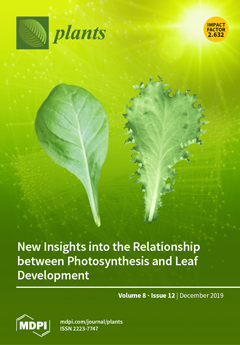Azolla is a genus of aquatic ferns that engages in a unique symbiosis with a cyanobiont that is resistant to cultivation.
Azolla spp. are earmarked as a possible candidate to mitigate greenhouse gases, in particular, carbon dioxide. That opinion is underlined here in this paper to show the broader impact of
Azolla spp. on greenhouse gas mitigation by revealing the enzyme catalogue in the
Nostoc cyanobiont to be a poor contributor to climate change. First, regarding carbon assimilation, it was inferred that the carboxylation activity of the Rubisco enzyme of
Azolla plants is able to quench carbon dioxide on par with other C
3 plants and fellow aquatic free-floating macrophytes, with the cyanobiont contributing on average ~18% of the carboxylation load. Additionally, the author demonstrates here, using bioinformatics and past literature, that the
Nostoc cyanobiont of
Azolla does not contain nitric oxide reductase, a key enzyme that emanates nitrous oxide. In fact, all
Nostoc species, both symbiotic and nonsymbiotic, are deficient in nitric oxide reductases. Furthermore, the
Azolla cyanobiont is negative for methanogenic enzymes that use coenzyme conjugates to emit methane. With the absence of nitrous oxide and methane release, and the potential ability to convert ambient nitrous oxide into nitrogen gas, it is safe to say that the
Azolla cyanobiont has a myriad of features that are poor contributors to climate change, which on top of carbon dioxide quenching by the Calvin cycle in
Azolla plants, makes it an efficient holistic candidate to be developed as a force for climate change mitigation, especially in irrigated urea-fed rice fields. The author also shows that
Nostoc cyanobionts are theoretically capable of Nod factor synthesis, similar to
Rhizobia and some
Frankia species, which is a new horizon to explore in the future.
Full article






